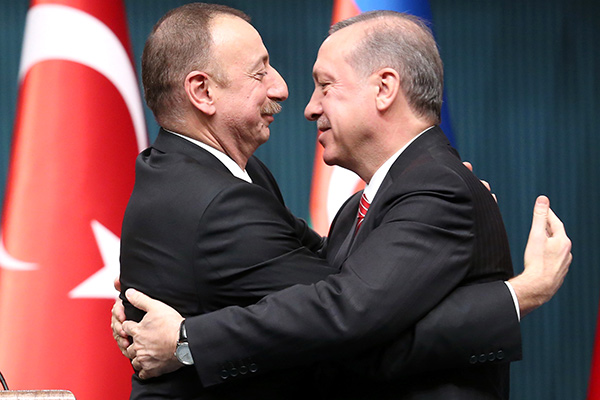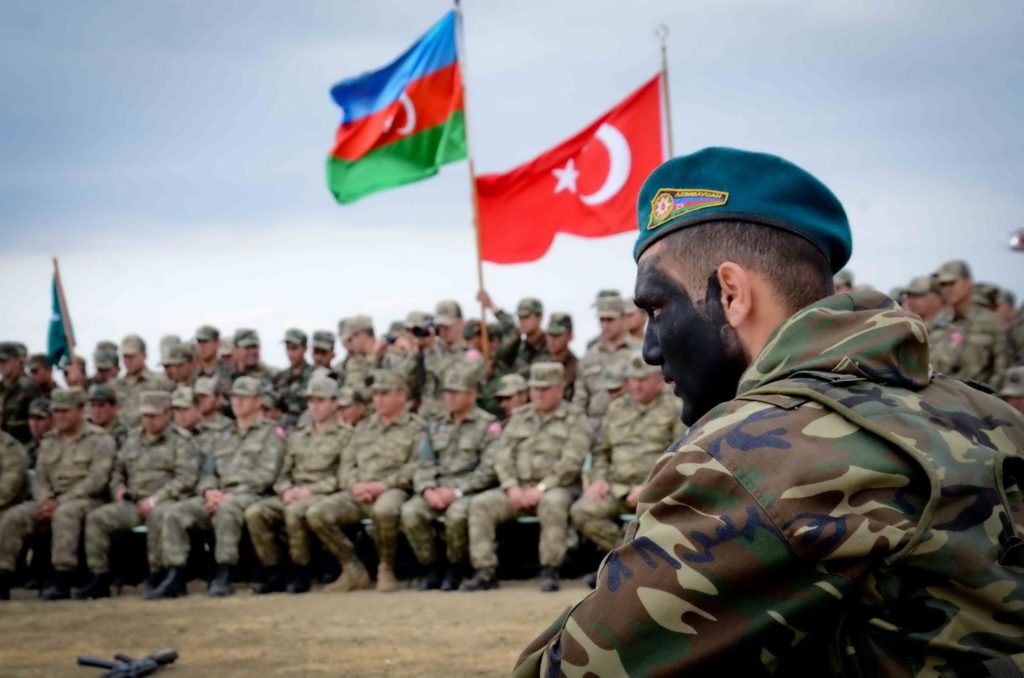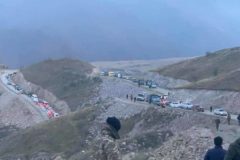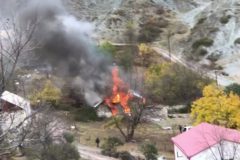In the Sunday morning of September 27, 2020, after 26 years of ceasefire held without peacekeepers, Azerbaijan launched an offensive across the line of contact controlled by the Defense Army of the Republic of Artsakh.
The fighting was the worst outbreak of war action since the so-called first Karabakh War of 1991-1994, encompassing the entire line of contact – with artillery, long-range missile, and drone strikes deep past Armenian lines. This war featured modern weaponry, representing a large-scale conventional armed conflict between Azerbaijan and Armenia-supported Artsakh Defense Army.
As stated, multiple times, by Azerbaijani oil dictator Ilham Aliyev and his ally – Turkey’s autocrat Recep T. Erdogan, the war was started intentionally by Azerbaijan, with the aim to change the long-standing status quo in the conflict.
The war of 2020 is a follow-on to Azerbaijan’s more limited offensive in 2016, which tested the ability of its army to take on the armed forces of its Armenian adversaries. At that time, Azerbaijan was forced to quickly cease fire – the war lasted for only 4 days.
The present confrontation became possible because of one key reason: open involvement of Turkey on Azerbaijan’s side. Turkey is seeking to leverage this conflict for its own foreign policy gains and its declared expansionist geopolitical ambitions – restoration of the glory of the Ottoman Empire.
On top of advanced tactical capabilities, Turkey airlifted battle-hardened jihadi mercenaries from Syria to aid Azerbaijan, deployed Turkish F-16 fighter aircraft and sent to Azerbaijan a contingent of commando forces of Turkey’s 3rd Field Army. As can be inferred from the April 2016 mini-war and by the July 2020 skirmishes along Armenia’s northeastern border with Azerbaijan Baku would never dare to launch a large-scale war against Artsakh without direct involvement of Turkish troops and the Islamic terrorists. At least two of such jihadi mercenaries were captured, extensively interrogated by Artsakh’s Defense Army, and showcased to international observers.
Azerbaijan’s initial combined offensive against Armenian lines was not successful in breaking through and securing territorial gains, but its forces have pushed back Armenian defenses in the south, along two vectors near the Iranian border. Armenia’s limited air defenses have failed to stop the Azerbaijan’s drones, but its troops, bolstered by volunteers and conscripts, have slowed the Azerbaijani advance. The war stopped on November 10, after a combined Azerbaijani-Turkish commando force captured the city-fortress of Shushi, Artsakh’s second-largest urban settlement.
Azerbaijan and Turkey have close ethnic and linguistic kinship, while Turkey’s relations with Armenia are burdened by the Ottoman Empire’s 1915 mass killing of 1.5 million Armenians, which world historians and the international community consider to be the first genocide of the 20th century. The Ottoman expeditionary army – the ill-famed Army of Islam – played an instrumental role in establishing the first-ever Azerbaijani state in 1918. In addition to linguistic and ethnic ties, Azerbaijan and Turkey share another important attribute: both are autocratic countries ruled by chauvinist leaders.
Azerbaijan’s initial combined offensive against Armenian lines was not successful in breaking through and securing territorial gains, but its forces have pushed back Armenian defenses in the south, along two vectors near the Iranian border. Armenia’s limited air defenses have failed to stop the Azerbaijan’s drones, but its troops, bolstered by volunteers and conscripts, have slowed the Azerbaijani advance. The war stopped on November 10, after a combined Azerbaijani-Turkish commando force captured the city-fortress of Shushi, Artsakh’s second-largest urban settlement.
Similarly to the war of 1991-1994, Azerbaijan extensively used internationally-banned cluster munitions and multi-launch rocket systems against Artsakh’s civilians, with the main target being Artsakh’s capital city of Stepanakert. MLRS used in the fight included 300mm BM-30 Smerch / Tornado multi-barrel rocket launchers, who fire from the distance of up to 60 miles. It was reported that Artsakh Defense Army reluctantly retaliated against Azerbaijan using similar munitions. Regrettably, Azerbaijan and Armenia are not parties of the Convention on Cluster Munitions.
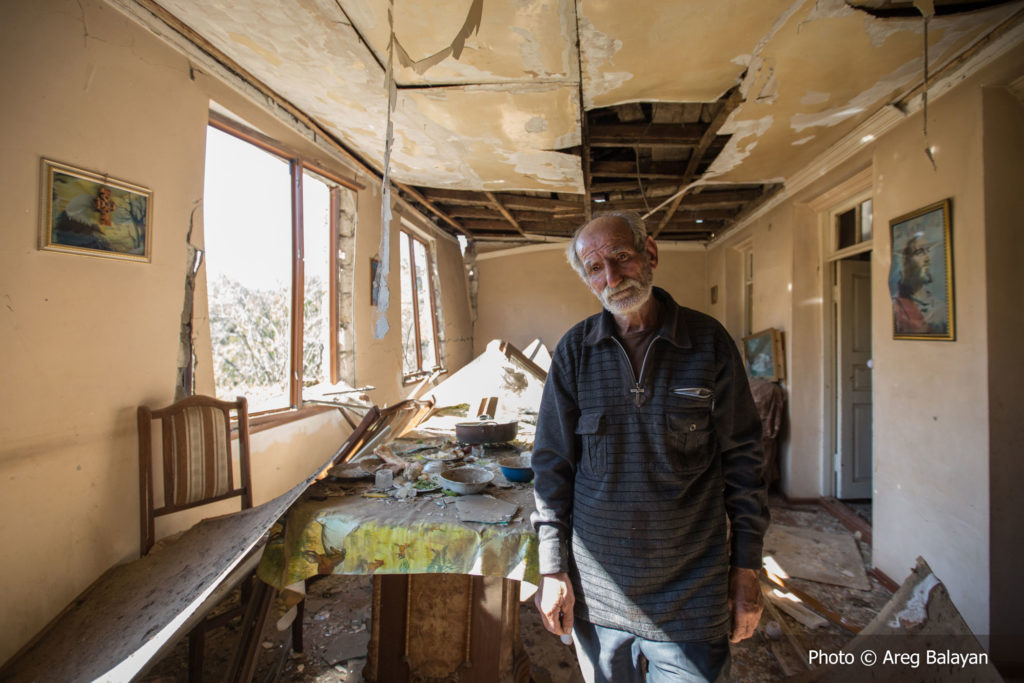
An elderly Armenian civilian from Artsakh in his house destroyed by Azerbaijani bombing 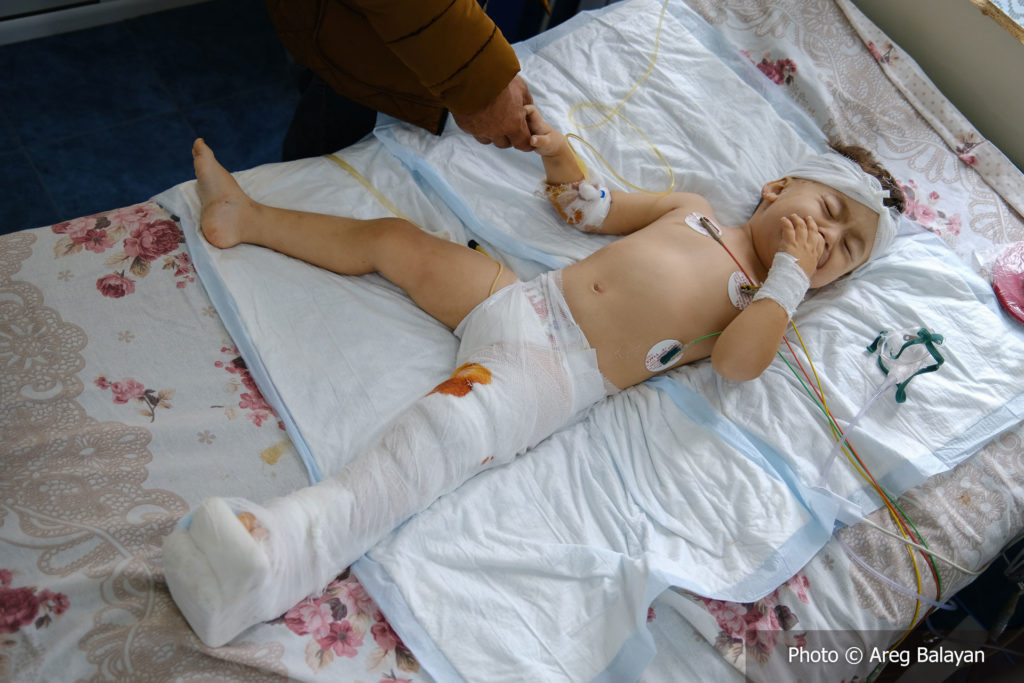
A wounded child, a victim of Azerbaijani bombing of Stepanakert 
Armenian civilian with burned face, a victim of Azerbaijani bombing of Stepanakert 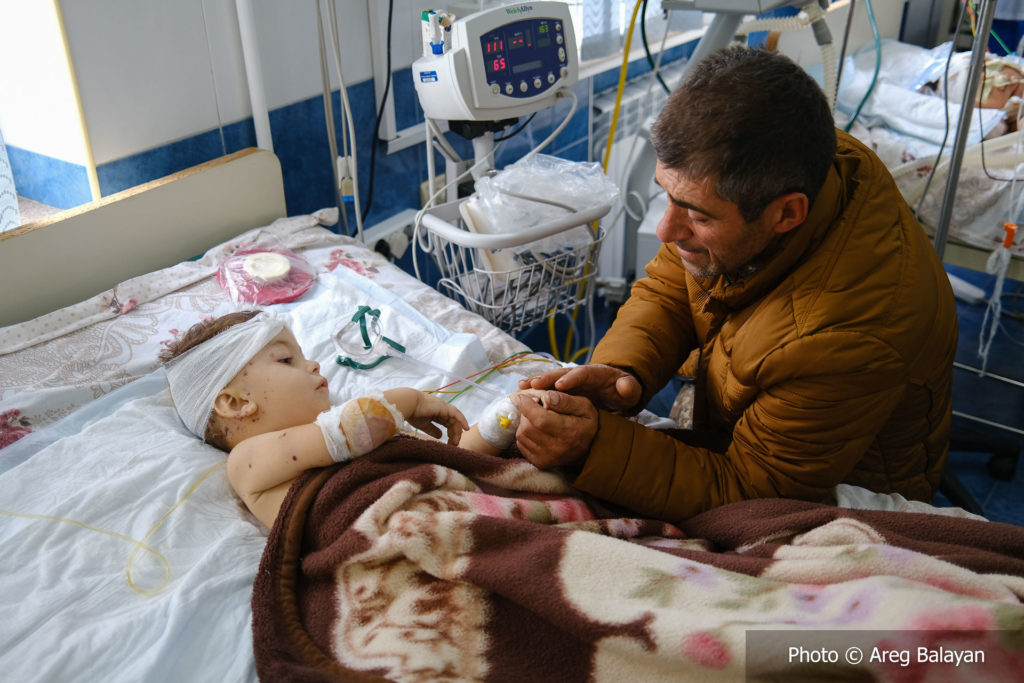
A man speaks with his child, wounded during Azerbaijani shelling, of civilian targets in Stepanakert, Nagorno-Karabakh (Artsakh) on Sept. 28, 2020.
Cluster munitions scatter hundreds of bomblets, or submunitions, over a wide area. It is estimated that between 5 and 20 percent of cluster bomblets fail to explode. They are then left behind, posing a threat to civilians similar to that of anti-personnel landmines. The use of these bombs violates the prohibition of indiscriminate attack because of the wide area covered by the numerous bomblets released, and the danger posed to all who come into contact with the unexploded munitions. Indiscriminate bombardment and the use of prohibited munitions were deployed by Azerbaijan because Baku’s ultimate goal – both now, and in the 80s and 90s as well – was to force the population of the Republic of Artsakh into exodus.
Baku’s ultimate goal – both now, and in the 80s and 90s as well – was to force the population of the Republic of Artsakh into exodus.
Warning: Graphic Content

